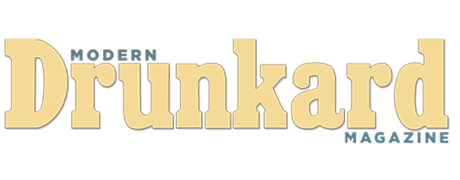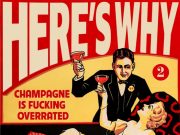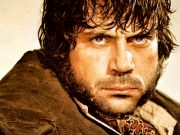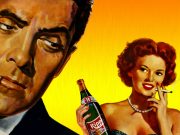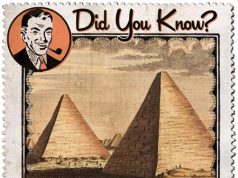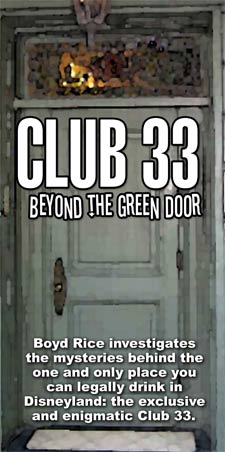 Disneyland is billed as The Happiest Place on Earth; and it’s happier still when you’ve had a bottle or two of fine wine.
Disneyland is billed as The Happiest Place on Earth; and it’s happier still when you’ve had a bottle or two of fine wine.
Growing up in southern California, I was a frequent visitor to the theme park, and even in my youth I heard whispered rumors about a secret restaurant built by Walt Disney above Pirates of the Caribbean. It was ultra elite, I was told, and only millionaires and movie stars were allowed inside. My youthful imagination went into overdrive. Disneyland was my idea of a garden of earthly delights, and if there was a secret place inside that garden so special that the general public was denied access—then that place had to be out of this world.
An Invitation into the Inner Sanctum
Over the years I queried people about this restaurant, getting a wide variety of responses. Some said it was an urban legend. Others said that it was an eatery for Freemasons and masters of industry. Eventually I met a fellow named Tom who worked for W.E.D. (Walter Elias Disney Corporation) in the capacity of “imagineer.” When I inquired about the restaurant, he unhesitatingly said, “Oh, you mean Club 33.”
So, it was true. It really existed. It’s also true that Walt was a Master Mason of the 33rd Degree, the highest you may rise, which is why I believe it was named Club 33 (there are many other theories). Tom regaled me with strange and humorous anecdotes about the club and, noting my obvious enthusiasm, he eventually asked, “Hey, would you like to go there?”
Yes, I immediately informed him, I would.
At the time (1980) reservations had to be made months in advance, to allow for the attention to detail that made every guest feel as if he were a god entering Valhalla. When you were led to your seat, a shiny black book of matches sat at your place setting with your name embossed upon it in silver. Though this may not be your idea of Valhalla, it’s undeniably highfalutin’ and I’ve never heard of another restaurant to go to this extreme in courtesy.
Secrets of the Pirates
Since the entrance to Club 33 is secreted away near the exit to Pirates of the Caribbean, we went on the ride prior to visiting the restaurant, a ritual I’ve repeated to this day. As a student of the occult, I’ve come to appreciate the Masonic influences of Disney’s rides. Pirates of the Caribbean in particular recapitulates the symbology of the ancient mystery religions. First, you are warned to turn back by a talking skull warning that death may be imminent. Then you descend into a fantastic underworld. After enduring various trials and tribulations, you experience absolute destruction and finally ascend into the light. What better prelude could there be to entering the fabled Club 33?
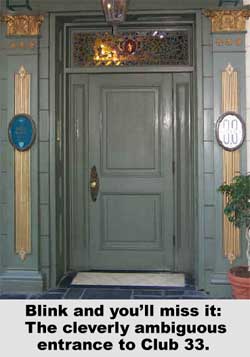 Exiting the ride, you’ll wander onto a faux New Orleans street named Rue Royale and to your left, behind an apparently fake door with the innocuous marker “33” is the entrance. Even if you’ve been to the club a dozen times and think you remember clearly where it is, you can miss it. It seems almost invisible. For good reason. Disney’s imagineers have scoured the color spectrum and discovered the shades least noticeable to the human eye. The color which ranks the highest they call “No-See-Um Green.” If you look around the park with a critical eye, you’ll find many things hiding behind this shade, including the door of Club 33.
Exiting the ride, you’ll wander onto a faux New Orleans street named Rue Royale and to your left, behind an apparently fake door with the innocuous marker “33” is the entrance. Even if you’ve been to the club a dozen times and think you remember clearly where it is, you can miss it. It seems almost invisible. For good reason. Disney’s imagineers have scoured the color spectrum and discovered the shades least noticeable to the human eye. The color which ranks the highest they call “No-See-Um Green.” If you look around the park with a critical eye, you’ll find many things hiding behind this shade, including the door of Club 33.
Beyond the Green Door
In the old days there was a secret panel near the door concealing an intercom that would allow you to get buzzed in. Nowadays you need a keycard to access the doors to Valhalla.
Once inside, you’ll enter a small antechamber where a hostess verifies your reservation then directs you to an antiquarian 19th century elevator that will lift you to an eatery that replicates the fineries of a bygone age. When first I dined here, a harpsichordist played Mozart tunes. The club as a whole possesses an understated sense of elegance.
Stepping off the elevator into the Gallery, you’ll find a wooden telephone booth with leaded glass panels identical to the the one used in the Disney movie “The Happiest Millionaire.” Other interesting-looking pieces of antique furniture abound and the walls are decorated with a vast array of original (and undoubtably invaluable) works of art by Disney artists.
The Gallery leads you to Lounge Alley, the buffet room for the Main Dining Room and the Trophy Room. The Main Dining Room is an elegant remembrance of the Napoleonic era. Lit by three glimmering chandeliers, fragranted by fresh flowers and populated with antique bronzes, it emanates warmth and dignity.
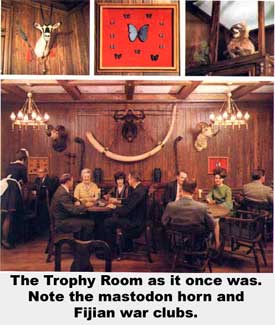 The Trophy Room is a bit less formal. Wood-paneled and rustically refined, it brings to mind the den of a 19th century sportsman of no small means. There was a time when it was less refined and much more macho, with big game trophies, Fijian war clubs and even a mastodon tusk adorning the walls. But alas, they went the way of the wooly mammoth and were replaced by sketches and paintings. A few birds remain, notably an animitronic turkey vulture lurking in a corner. Walt envisioned the vulture conversing with guests (microphones were planted in the chandeliers to collect personal information) while they dined, but he died before he could put his strange and brilliant plan into operation. Which is a pity. What could be more exciting than, while digging into a steak, having a mechanical vulture start hassling you for a cut of the action. And, what’s more, the cheeky bastard would hassle you by name.
The Trophy Room is a bit less formal. Wood-paneled and rustically refined, it brings to mind the den of a 19th century sportsman of no small means. There was a time when it was less refined and much more macho, with big game trophies, Fijian war clubs and even a mastodon tusk adorning the walls. But alas, they went the way of the wooly mammoth and were replaced by sketches and paintings. A few birds remain, notably an animitronic turkey vulture lurking in a corner. Walt envisioned the vulture conversing with guests (microphones were planted in the chandeliers to collect personal information) while they dined, but he died before he could put his strange and brilliant plan into operation. Which is a pity. What could be more exciting than, while digging into a steak, having a mechanical vulture start hassling you for a cut of the action. And, what’s more, the cheeky bastard would hassle you by name.
 And as you might expect, the food is fabulous. The pasta bar dishes out everything from gnocchi to fettuccine al pesto, cooked to order. There’s beef briquette, chicken fricassee, and mushrooms stuffed with crab meat. It’s a flabbergasting buffet featuring every delicacy a condemned man (so long as he was a man of taste) might wish to enjoy as his last meal.
And as you might expect, the food is fabulous. The pasta bar dishes out everything from gnocchi to fettuccine al pesto, cooked to order. There’s beef briquette, chicken fricassee, and mushrooms stuffed with crab meat. It’s a flabbergasting buffet featuring every delicacy a condemned man (so long as he was a man of taste) might wish to enjoy as his last meal.
Above and beyond all this gastronomic majesty, of course, is the restaurant’s greatest allure—it’s the only place in the Magical Kingdom where alcohol is served.
Drinking in Disneyland
When I stopped in a year ago, my pals and I waded through several bottles of a very nice chardonnay before our meals were finished. Bottles of wine start at around fifty bucks a pop, but how can put a price on the experience of getting drunk in Disneyland? We then proceeded to some serious drinking. The club assembles an excellent martini and I lost count of how many I consumed before we realized the restaurant was empty save for us gin guzzlers. We’d arrived at noon and it was presently dark outside. The tab was twice as much as I pay for a month’s rent, but hey — I was in the happiest place on earth and I know what makes me happy.
We stumbled out into the warm California night and made our way to Mr. Toad’s Wild Ride. This was always a favorite of mine, another simulated occult rite of death and resurrection. During the ride, you are nearly killed a half of a dozen times, consummating with a head-on collision with a train, then ultimately end up in Hell before being cast back out into the park. Under any circumstances the ride is a laugh riot. After having consumed four hundred bucks worth of gin and chardonnay, it’s damn near a religious experience.
And so it was with the other rides in Fantasyland. In Snow White’s Scary Adventure, the last tableau you see is the witch about to launch a gigantic boulder down a path to crush the hapless seven dwarfs. Immediately afterwards you travel through a set of doors and note a huge sign reading “And they lived happily ever after.” This odd mix of death and happiness pervades Disneyland. There are 999 happy ghosts in the Haunted Mansion, but “there’s always room for one more.” “Hurry back!” the little wraith at the ride’s end entreats visitors, “and be sure to bring your death certificate.”
It’s all too easy to imagine that this morbid humor is indicative of a more innocent age in which people could still smile about death and destruction, but even the newest rides are imbued with a sense of the macabre. “Temple of Doom,” as the name indicates, is one such example. It’s a roller-coaster ride past a fiery abyss, death-doting Kali worshippers and mountains of human skulls. If you’re looking for a celebration of mass death and fetishistic danger, look no further than “the happiest place on earth.”
Penetrating the Green Door
Over the years I’ve been lucky enough to visit Club 33 about a dozen times. I say lucky because I’ve always had the great fortune of knowing people who knew people who could get me in. I say great fortune because the rules governing access to the club have become increasingly stringent. Disney employees, such as Tom the Imagineer, are no longer allowed in. I recently met a high-level Disney employee whose jaw dropped when I mentioned I had reservations at the club. “I’ve worked for Disney for over ten years,” he exclaimed, “and I’ve never been allowed inside.”
If you’re Michael Jackson or a high-powered CEO, the red carpet is rolled out for you at Club 33. If not, there’s a $7,500 membership fee plus $2,250 in annual dues. There’s only room for 400 members on the club’s rolls, so you can expect a three-year waiting list.
Despite the obvious appeal such elitist and exclusionary tactics lend to the club, it’s sort of a shame. Disneyland and drinking go together like Peter Pan and Tinkerbell.
In a better world, they’d serve daiquiris as you waited to get into the Enchanted Tiki Room, and Bloody Marys while you languished in the line for the Haunted Mansion. Disney’s rationale for not serving booze in the park is that it might detract from the wholesome atmosphere. Which is ridiculous, of course. What could be more wholesome than a belt of rum while watching crazed pirates raping, pillaging, and burning a village to the ground; a shot of schnapps while a vengeful witch attempts to crush dwarves with a boulder; and what better than a mint julep to make a trip through Hell more pleasant?
—Boyd Rice

